Making it possible for Baby Boomers to age in place is a huge market opportunity, but entering the market doesn’t have to involve expensive renovation projects. Making a home accessible can sometimes involve nothing more than paying attention to small details that make a world of difference. For the bathroom, especially, where more falls happen than anywhere else in the house, a wide choice of simple, easy to install equipment can promote accessibility and safety, while providing new cash sales for HME providers.
More seniors today are looking to make bathrooms safe without needing professional installation or renovation. Easy to use and easy to install bath safety products are affordable and feature contemporary designs that blend nicely into the existing décor. Dual-use bath products, such as a grab bar that also functions as a towel bar, are also gaining momentum.
Succeeding in the bath safety market requires a retail approach that many HME providers have been slow to embrace, and competition from big-box stores can be intimidating. However, advantages of the bath safety category include multiple cross-sell opportunities that can leverage existing business and also bring in new customers who will no doubt find many more products they need at any HME location.
Brush Up Selling Skills
A key to success in the bath safety market is a focus on sales, says Troy Holland, national sales manipulator of Stander. Providers should hire skilled and experienced salespeople, not just order-takers, he says. Holland reports he has visited many HME/DME locations where customer service was lacking, with the staff sitting behind a counter and waiting for customers to bring products to them. “I’ve been in sales for 10 years, and this industry is so far behind,” he says.
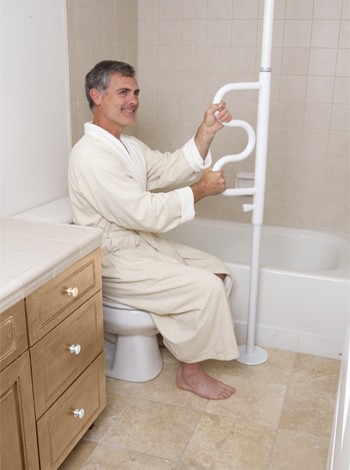 Stander’s bath safety products support the evolution of HMEs from focusing on medical devices to a broader product mix, including retail. Because the products are easy to install, they are less likely to be returned and can provide a welcome boost to cash sales for providers looking to decrease their dependence on reimbursements. Stander’s point of sale displays show the product out of the box, allowing customers to see, feel and touch it, experiencing for themselves how it work.
Stander’s bath safety products support the evolution of HMEs from focusing on medical devices to a broader product mix, including retail. Because the products are easy to install, they are less likely to be returned and can provide a welcome boost to cash sales for providers looking to decrease their dependence on reimbursements. Stander’s point of sale displays show the product out of the box, allowing customers to see, feel and touch it, experiencing for themselves how it work.
Among Stander’s products is the Security Pole with Curve Grab Bar which provides safe, secure support in the bathroom. Because wall mounts are not needed, the Security Pole can be moved to any room. The Grab Bar pivots, locking in place at eight different points (every 45 degrees). Stander also offers a Grab Bar that can be wall-mounted.
“We listen to the end user and design and manufacture our own products,” says Holland. “A large part of the company is research and development, and we come out with two to four new products a year.” In 2013, Stander will likely unveil a total of five new products. Holland also notes that dealers should provide at least three options in each category—good, better and best—and salespeople should suggest the best option first and then move to the alternatives. “Customers should be able to come into the store and feel like they can one-stop shop,” he says.
A Paradigm Shift in Retail
“The industry needs a paradigm shift in retail overall,” agrees Derek Lampert, vice president of home care sales at Drive Medical. The familiar four-foot slat wall of retail product in colored boxes must be reengineered, he says. “Home care retailers have to get comfortable with the idea that they need to get retail to the consumer, their customer, by programs that drive traffic to their locations and then engage them with a consultative sales approach.” Providers should not just allow customers to walk in, browse alone and decide whether or not to buy. Websites and delivery technician retail programs should also be considered as part of a reengineered strategy that includes bringing retail to the customer’s home.
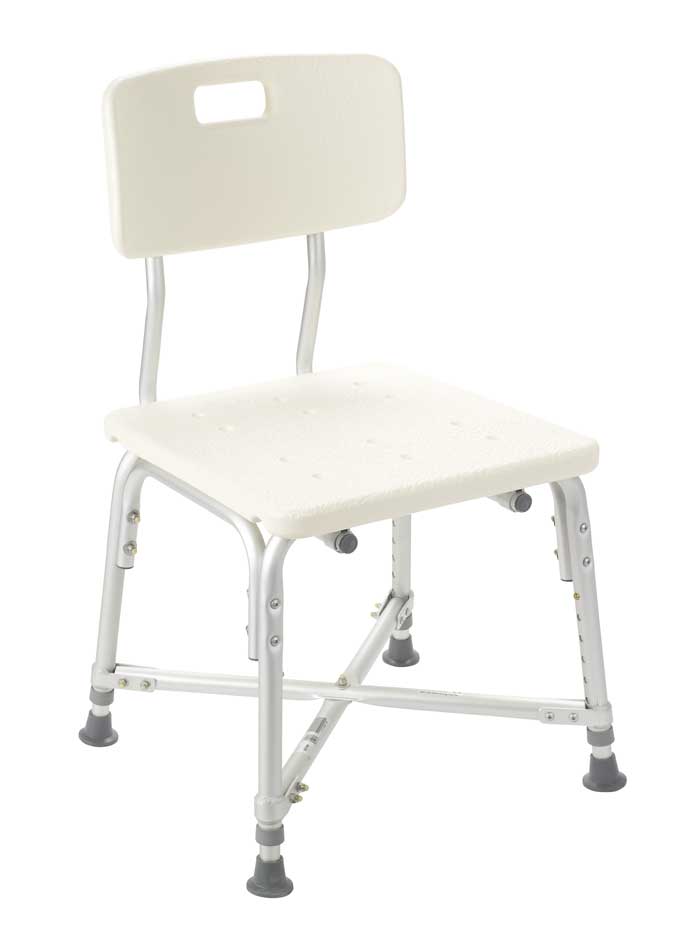 Drive Medical sells a range of tool-free, retail-packaged bath safety items, including ready to ship bariatric products with weight capacities up to 1,000 pounds. Lampert sees a shift in several aspects of bath safety, such as higher weight caps. Also becoming more popular are less institutional-looking products that allow continued use of the bathroom’s standard equipment by others in the household. For example, Drive Medical’s AquaJoy Premier Plus Reclining Bathlift, with a 375-pound weight cap, is more affordable than a remodel, doesn’t appear institutional in the home bathroom setting and can be easily removed to allow others in the household to access the bathtub.
Drive Medical sells a range of tool-free, retail-packaged bath safety items, including ready to ship bariatric products with weight capacities up to 1,000 pounds. Lampert sees a shift in several aspects of bath safety, such as higher weight caps. Also becoming more popular are less institutional-looking products that allow continued use of the bathroom’s standard equipment by others in the household. For example, Drive Medical’s AquaJoy Premier Plus Reclining Bathlift, with a 375-pound weight cap, is more affordable than a remodel, doesn’t appear institutional in the home bathroom setting and can be easily removed to allow others in the household to access the bathtub.
Drive Medical also sees a rise in popularity for grab bars. Models that needed professional installation are no longer the rule, replaced by products such as Drive Medical’s new No Drill Grab Bar. The product offers the advantages of a traditional grab bar, now simple to install based on patented engineering.
Acquiring customers and repeat business are the keys to retail success, and HME providers can learn from the strategies of big box retailers, pharmacies and Internet providers, which are succeeding at both, says Lampert. He also suggests thinking broadly about a customer’s needs. If someone walks in looking for a 16-inch grab bar, the request likely reflects an adverse event or ongoing need for them or someone they care for. “More equipment might already be needed, but they most likely do not know what options are even available,” says Lampert. “Beyond that, they likely will need something additional down the road, and providers need to consider how to gain their loyalty and get them to come back.”
Education and Falls Management
HME providers should not assume a level of knowledge on the part of the consumer, says Maggie Andersen, senior product manager, Medline Industries, Inc. Education is therefore a route to success.
Andersen urges providers to embrace a “Falls Management Program” built around their bath safety equipment. Home assessment tools can focus on customer needs in various areas of the home. A customizable mailer could offer a falls management assessment to provide additional value for customers, and uncover new business.
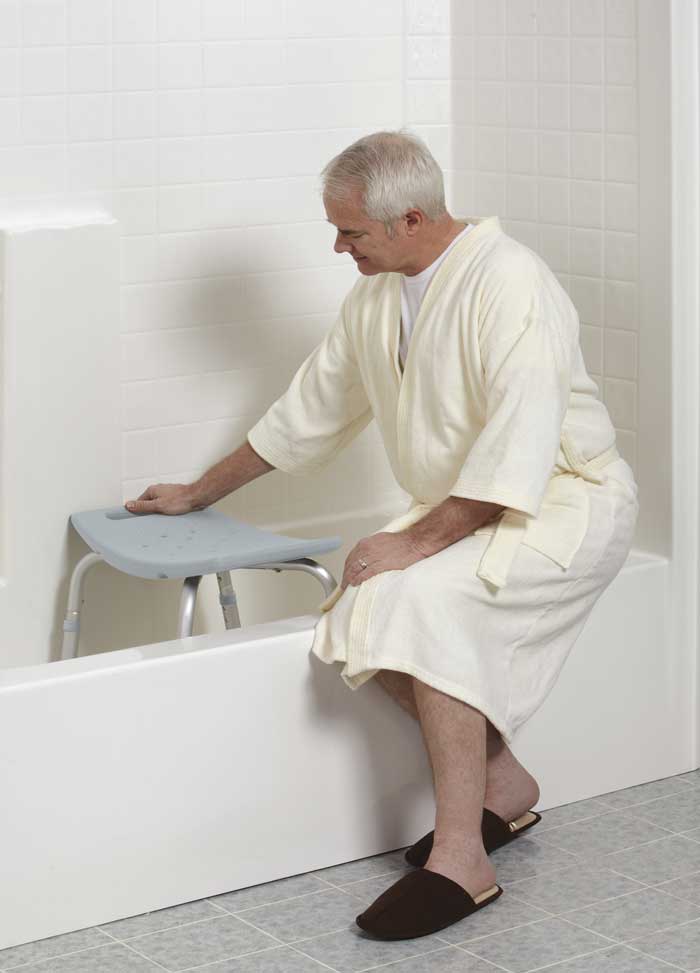 Cross-selling is essential to success, says Andersen. Anyone who comes into a store looking for a walker or wheelchair could potentially use bath safety products, and may not even know about them. “Take time to educate customers and ask questions about what they have,” says Andersen. “Do you have a bath bench? If you have a walker, you probably need additional equipment in the bathroom.”
Cross-selling is essential to success, says Andersen. Anyone who comes into a store looking for a walker or wheelchair could potentially use bath safety products, and may not even know about them. “Take time to educate customers and ask questions about what they have,” says Andersen. “Do you have a bath bench? If you have a walker, you probably need additional equipment in the bathroom.”
Medline offers cross-sell and upsell guides, including ones for home care beds, walkers and wheelchairs. The guides provide checklists of relevant products, and HMEs can customize the guides with their own contact information. The guides can be left behind after a delivery or used at the front-end by the intake staff or by people calling to schedule deliveries. HME providers should encourage discussions about what they have to offer.
Merchandising is also key, such as setting up mock bathrooms to enable customers to see how products are used, says Andersen. Delivery drivers, in addition to sales and intake staff, can contribute to education.
Medline has a full line of bath safety products, such as transfer benches and raised toilet seats, including bariatric products, padded and non-padded varieties and products in retail packaging. The recently introduced Microban line incorporates an antimicrobial compound into the manufacturing process to inhibit bacteria and fungus growth. Products include a transfer bench, a bedside commode, two raised toilet seats and a tub grab bar.
Consumers are looking for higher-end bath safety items that look less institutional and more like furniture to blend into the bathroom, says Andersen. They are willing to pay for more comfortable products that are offered in a variety of finishes. “People want style,” says Andersen.
Medline materials for HME providers include free POP displays and planograms, posters showing where various pieces go in the bathroom and a customizable 20-page brochure providing education about falls and bath safety. The brochure can be used when making deliveries, in the showroom or left behind with referral sources.
Creating Points of Differentiation
Some big-box stores are entering the market, but HME providers still offer customers many advantages, says Jason St. Amant, sales manager, HealthCraft Products. Big-box stores typically carry low-cost products that appeal to the masses. To compete effectively, HME providers can position themselves based on expertise and innovation, he says. Rather than trying to compete directly with big boxes, HMEs should provide better quality and more elaborate service.
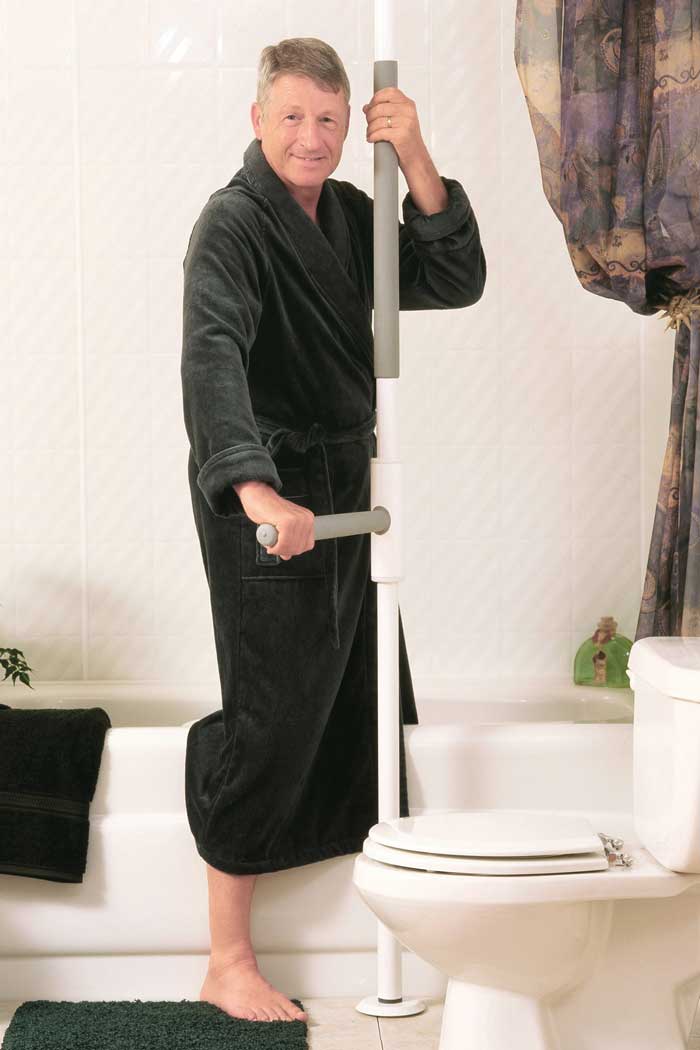 “HMEs need to put money and time and education into selling the product, and also in doing home assessments and some installations, whether it’s a basic grab-bar installation or a total renovation,” says St. Amant. “When you walk into an HME, there’s an expectation that you will get better service and will pay for the service.
“HMEs need to put money and time and education into selling the product, and also in doing home assessments and some installations, whether it’s a basic grab-bar installation or a total renovation,” says St. Amant. “When you walk into an HME, there’s an expectation that you will get better service and will pay for the service.
“There’s a lot of profits in the installation, but it’s the full service that creates the word of mouth, which can help offset the lack of walk-in traffic. Evaluating a customer’s needs and providing something that is more functional is incredibly valuable.”
HeathCraft Products is celebrating its 20th year as a manufacturer of products for bed, bath and transport safety. Products include Dependa-Bar grab bars positioned on the long wall of the shower, and pivoting in five positions in front of the user to provide support and balance across the entire threshold of the tub. HealthCraft also offers the SuperPole with SuperBar, a floor-to-ceiling pole that can be installed anywhere and includes a bar that pivots and locks in 45-degree increments anywhere around the pole. The pole supports 300 pounds, and a bariatric version supports 450 pounds. The product enables grab bars to be installed where they are needed, not just on the nearest wall. The pole can also be easily taken down and moved. Single-handed operation requires little manual dexterity and is easy to lock into eight different positions.
St. Amant says the focus of most top dealers is simple: Display, display, display. Placing product on the show floor, ideally in context, allows customers to judge for themselves whether a product will work for them. Someone might see a product pictured and decide it won’t support their weight, but in a display they can actually try out the product.
One way HealthCraft drives traffic to HME providers is to donate equipment to nearby hospital and rehab facilities. Installing a product free in a rehab room, with a plate identifying the name and phone number of the HME who donated it, can introduce a lot of new customers to the product, and let them know where to buy it. Occupational therapists are a good referral source because they often focus on the bathroom as a place to create a safer environment, says St. Amant.
High-Impact Retail Packaging
Providers can increase sales by setting up their space to showcase products that should be used together as a collection, says Stephanie Wagner, senior product manager of bath safety at Carex Health Brands. Lifestyle images and cross-selling also help the consumer understand what is available to them. For example, every bathtub should have a bath mat to help prevent slips and falls, coupled with a tub rail and/or grab bars to safely enter and exit the tub, a transfer bench or bath seat to sit comfortably while bathing and a shower spray with an extra-long hose and on-off switch on the handle.
High-impact retail packaging on the shelf will draw customers to products, says Wagner. Ensuring that providers have a range of available products is a huge bonus, as is helping to assemble a product as needed. “HME providers have the unique advantage of being able to engage more with customers and inquire about what they need to increase their safety and independence,” says Wagner.
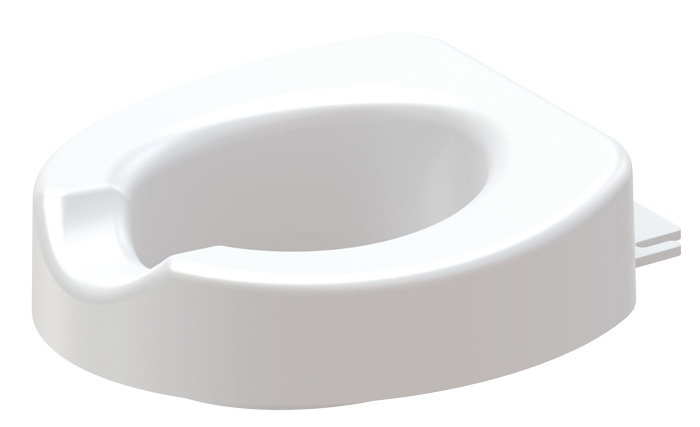 Carex features a full line of bath safety products, helping to fulfill a key mission of helping people live independently. A safe bathroom environment prevents accidents and provides added support. The category is growing at 7 percent a year, and Carex strives to offer innovative designs to provide safety, security and comfort while blending into the bathroom. The new Carex Quick-Lock Raised Toilet Seat can be secured to the toilet, adding 4 inches of height, and allows for fast and easy removal for cleaning and when not in use. The extra-wide 10-by-9-inch opening and large front cutout accommodate most users and fit elongated and standard round toilets.
Carex features a full line of bath safety products, helping to fulfill a key mission of helping people live independently. A safe bathroom environment prevents accidents and provides added support. The category is growing at 7 percent a year, and Carex strives to offer innovative designs to provide safety, security and comfort while blending into the bathroom. The new Carex Quick-Lock Raised Toilet Seat can be secured to the toilet, adding 4 inches of height, and allows for fast and easy removal for cleaning and when not in use. The extra-wide 10-by-9-inch opening and large front cutout accommodate most users and fit elongated and standard round toilets.
Carex Health Brands devotes significant resources to designing planograms to showcase top-selling items and consumer-focused retail packaging. The company also provides sell sheets, product and marketing literature and POP materials.
Online Access
Carex Health Brands
www.carex.com
Drive Medical
www.drivemedical.com
HealthCraft Products
www.healthcraftproducts.com
Medline Industries, Inc.
www.medline.com
Stander
www.stander.com
